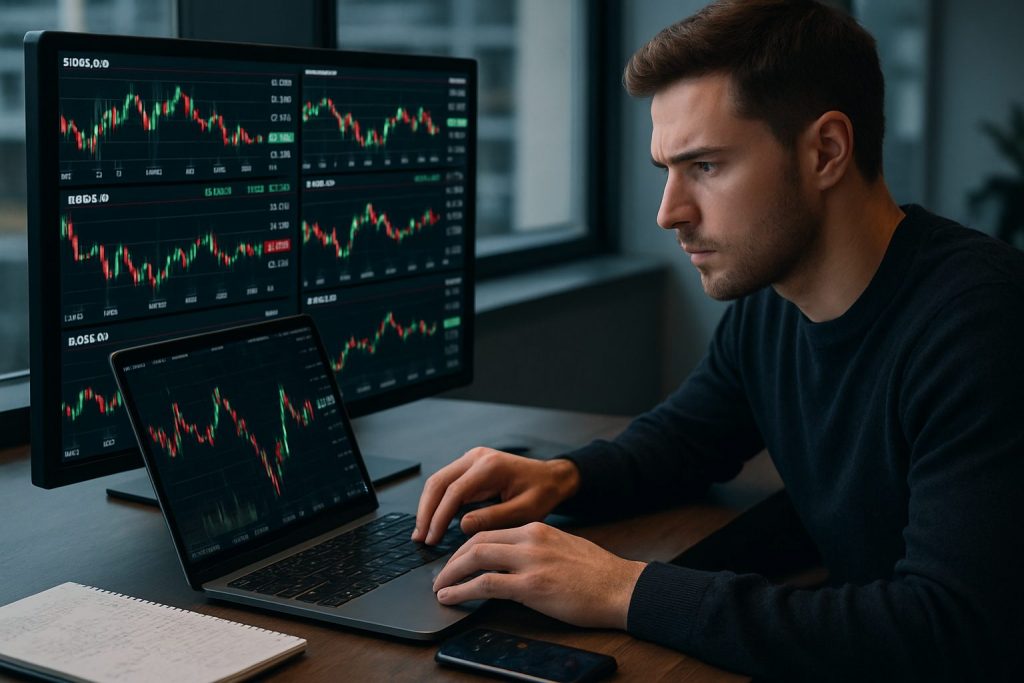Can you trade with just $1 per pip in forex? Yes — trading with just $1 per pip in forex is possible by using mini or micro lots and careful position sizing, but it demands strict risk management, attention to spreads, and appropriate platform choice.
Trading with a pip value of $1 per pip is an attainable goal for many retail traders who prefer controlled exposure rather than large standard lots. In practice, this setup usually means trading mini lots (0.10) or using specific micro-lot configurations on platforms such as Pocket Option, Quotex, and Olymp Trade. The realities to consider are: the broker’s minimum lot size and available instruments, the spread cost that must be overcome before a trade becomes profitable, and the impact of leverage and margin on account survivability. Traders often compare features or search for liquidity and pricing transparency from big names like Forex.com, OANDA, or XM when researching, but execution rules change per platform. Practical examples, trade-sizing templates, and risk rules help turn the abstract idea of “$1 per pip” into a consistent trading plan that fits a cautious, growth-focused approach.
What does $1 per pip mean and how is it achieved in forex trading?
The phrase $1 per pip simply refers to the monetary change in an account balance when the market moves by one pip for the position held. Achieving this requires selecting the correct lot size and currency pair.
- Mini-lot (0.10 lot) typically yields approximately $1 per pip on USD-denominated pairs.
- Micro-lots (0.01 lot) produce roughly $0.10 per pip, useful for smaller accounts.
- Pairs with JPY pricing follow a different decimal rule (pip = 0.01), changing the direct dollar equivalence.
| Lot Size | Units | Approx. pip value (USD account) | Common use |
|---|---|---|---|
| Standard (1.00) | 100,000 | $10 | Experienced traders, larger accounts |
| Mini (0.10) | 10,000 | $1 | Preferred for $1 per pip target |
| Micro (0.01) | 1,000 | $0.10 | Small accounts, scaling in |
Key practical insight: selecting a mini-lot on a USD-paired instrument is the most straightforward route to reach $1 per pip. That choice must be matched to the broker’s lot increment rules and spreads.
How to calculate pip value quickly
Calculation varies slightly by currency pair and account currency. For USD-base pairs, the pip formula simplifies and micro/mini lot tables help speed decisions.
- Use the platform’s pip calculator when available.
- For EUR/USD, a 0.10 lot gives ~$1 per pip if account is USD-denominated.
- For USD/JPY, remember the pip is 0.01; recompute value accordingly.
| Pair | Lot Size | Example rate | Pip value (approx.) |
|---|---|---|---|
| EUR/USD | 0.10 | 1.1200 | $1.00 |
| USD/JPY | 0.10 | 150.00 | ~¥100 per pip ≈ $0.67 (requires conversion) |
Final point: always verify pip value on the chosen platform before entering trades; platform calculators remove guesswork.
Practical routes to trade with $1 per pip and platform considerations
Not all brokers or instruments allow neat mini-lot increments, so execution depends on platform rules. Pocket Option, Quotex, and Olymp Trade are common retail platforms to check for lot granularity and micro/mini options.
- Confirm minimum lot size and whether fractional lots are allowed.
- Check spreads during typical trading hours; wide spreads can erase small pip gains.
- Test on demo accounts to confirm the real pip value and behavior under live spreads.
| Checklist | Why it matters |
|---|---|
| Minimum lot size and increments | Determines if $1 per pip is achievable |
| Spread and execution speed | Impacts break-even and slippage on small targets |
| Leverage and margin rules | Affects survivability of drawdowns |
Practical takeaway: choose a platform where mini-lots and predictable spreads make $1 per pip trading operational and repeatable.
Costs, spreads and how they affect a $1-per-pip plan
A strategy that targets small absolute pip profits is sensitive to transaction costs and spread variability.
- Spreads expressed in pips must be overcome before a trade becomes profitable.
- Variable spreads widen during news; plan around economic calendars.
- Commissions, swap fees, and slippage compound over frequent small trades.
| Cost type | Example effect on $1 per pip trading |
|---|---|
| Spread | 2-pip spread requires 2 pips to break even on a $1/pip position |
| Commission | Fixed fees reduce net per-trade profit for small targets |
| Swap/overnight | Can turn a small winner into a loss if positions held overnight |
Closing insight: when aiming for $1 per pip, transaction costs and timing are decisive—scaling frequency without accounting for them undermines results.
Risk management, position sizing and a simple case study for $1 per pip
Risk control remains the anchor. Defining account risk per trade in dollars then converting to allowable pips creates a disciplined sizing rule.
- Apply a capital-risk rule (e.g., 1% per trade) and convert that dollar amount into pips at $1 per pip.
- Use stop-loss orders sized by market structure, not just a pip count.
- Backtest on demo history to ensure historical pip movement supports the strategy.
| Account balance | 1% risk (USD) | Pips risk allowed at $1/pip |
|---|---|---|
| $5,000 | $50 | 50 pips |
| $1,000 | $10 | 10 pips |
Case study insight: with a $1 per pip framework, an account of $1,000 risking 1% can afford a stop-loss of ~10 pips—this clarifies strategy suitability and required edge.
Resources, rules and further reading for small-account traders
Understanding regulatory rules and funding needs is important when choosing instruments and trading frequency. The following resources explore day-trading requirements and whether trading small accounts can avoid certain regulatory minimums.
- How much is required to start day trading forex
- Can I avoid the 25K rule by trading forex?
- Can I start day trading with a small account and grow it?
- Do I need a margin account for day trading?
- Why do brokers require $25,000 for day trading?
| Topic | Recommended reading link |
|---|---|
| Minimum capital and rules | Why do brokers require $25k for day trading? |
| Small account growth | Can I start day trading with a small account and grow it? |
Resource insight: combining platform checks with knowledge of regulatory day-trading rules and margin requirements helps define realistic expectations for a $1 per pip approach.
Common questions about trading with $1 per pip
The following answers address recurring concerns for traders who plan small pip-value strategies.
- Can a $100 account trade at $1 per pip? — Technically yes with high leverage and micro-lot aggregation, but risk of rapid drawdown increases; smaller pip values or micro-lots are safer.
- Do spreads kill $1-per-pip scalps? — Wide or variable spreads make frequent small-target strategies difficult; select quiet hours and platforms with tight spreads.
- Are demo accounts reliable for testing? — Demo execution can differ from live in slippage and fills; always validate on a small live size first.
| Question | Short answer |
|---|---|
| Is $1 per pip realistic? | Yes, with mini-lots and proper platform features. |
| Which platforms allow easy mini-lot trading? | Retail platforms like Pocket Option, Quotex, and Olymp Trade often provide micro/mini flexibility—verify before trading. |
Closing thought: a plan built around $1 per pip can be practical and pedagogical for achieving consistent risk sizing, but success depends on disciplined application of the rules above.
Additional helpful links: How much is required to start day trading crypto, Can I avoid the 25K rule by trading futures?, Can I avoid the 25K rule by trading ETFs?, Can I avoid the 25K rule by trading crypto?.
Short FAQ
- How to start trading at $1 per pip? — Use mini-lots, confirm lot increments on chosen platform (Pocket Option, Quotex, Olymp Trade), and size stops according to account risk.
- Which pairs suit $1 per pip? — Major USD pairs (EUR/USD, GBP/USD) are easiest to map; yen pairs require decimal adjustment.
- Is leverage needed? — Leverage is optional but common; it increases risk and should be used conservatively with small pip targets.
With over a decade of experience navigating global financial markets, I specialize in identifying trends and managing risk as a professional trader. My passion for economics drives my daily commitment to staying ahead in this fast-paced industry. Outside of the markets, I enjoy exploring technology like cryptocurrencies and new investment strategies.

